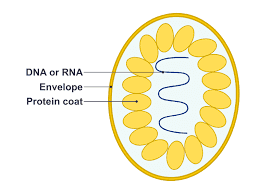Chapter 1- Characteristics and Classification of Living Organisms
Characteristics of Living Organisms
The Age-Old Acronym: MRS GREN

Movement: an action by an organism or part of an organism causing a change of position or place
Respiration: the chemical reactions in cells that break down nutrient molecules and release energy for metabolism
Sensitivity: the ability to detect and respond to changes in the internal or external environment
Growth: a permanent increase in size and dry mass
Reproduction: the processes that make more of the same kind of organism
Excretion: the removal of the waste products of metabolism and substances in excess of requirements
Nutrition: the taking in of materials for energy, growth, and development
Concept and Uses of Classification System
Sequence of Classification
Organisms are classified into groups by the features they share.
Species: a group of organisms that can reproduce to produce fertile offspring.
Sequence of Classification: Domain →Kingdom → Phylum → Classes → Orders → Families → Genus → Species.
Acronym: Dear Kate, Please Come Over For Great Sex
The Binomial Nomenclature
The Binomial System of Naming Species is an internationally agreed system in which an organism's scientific name is comprised of two parts, namely, the genus and species.
The format is Genus species. The genus is capitalised, and the species are not.
The classification of organisms helps show the evolutionary relationships between them.
Scientists also use the DNA base sequence to help classify organisms.
The similarity in DNA chains shows how closely the two organisms are related.

Dichotomous Keys
Dichotomous Keys use visible features to classify organisms. They give you a choice of two features, and you follow the one that applies: each option leads to another option until the organism is narrowed down to its genus and species.

Features of Organisms
The Five Kingdoms

Animals: Multicellular ingestive heterotrophs (eat living organisms). Ex: cat, ladybird, newt, etc.
Plants: Multicellular photosynthetic autotrophic (make their food) organism with a cellulose cell wall and chloroplasts. Ex: cactus, oak tree.
Fungi: Single-celled or multicellular heterotrophic and saprotrophic organisms with cell walls not made of cellulose, spread by spreading spores in moist/dark/warm environments. Most have hyphae and mycelium in structure. Ex: yeast, mushrooms.
Prokaryotes: Single-celled organisms with no true nucleus and mitochondria. Many also have plasmids (important for Genetic Engineering). Ex: E.coli, Salmonella.
Protist or Protoctist: Single-celled organism with a nucleus. Eukaryotes. Some are multicellular. Ex: Amoeba, seaweed.
Vertebrates

Acronym: My Bitch Ate Ass For Race
Types of Vertebrates | Features |
|---|---|
Mammals | Fur on the skin, External ears (pinna), Internal fertilisation, Mammary Glands |
Reptiles | Thick, dry, scaly skin, Usually four legs, Internal fertilisation, Soft Shelled Eggs |
Fish | Wet scales, Streamlined body shape, External fertilisation, and soft eggs |
Amphibians | Smooth, moist skin, External fertilisation, and soft eggs, Gills, & Lungs can live on land and water. Most have four legs. |
Birds | Feathers on the body and scales on legs, Constant internal body temperature, Hard eggs, Internal fertilisation, birth through eggs |
Arthropods
Invertebrates: Organisms that do not have a backbone.
All arthropods have three standard features:
Exoskeleton
Jointed legs
Segmented body
Type of Arthropod | Number of Legs |
|---|---|
Insects | 6 |
Arachnids | 8 |
Crustaceans | >10 |
Myriapods | >20 |
Classification of Plants
In IGCSE Biology, the plant kingdom is classified into ferns and flowering plants.
Ferns:
Do not produce flowers/seeds
They are plants with roots, stems and feathery leaves
Reproduce by spores
Flowering plants:
They are plants with roots, stems and leaves
Reproduce sexually through flowers and seeds
Seeds are produced inside the ovary in the flower
Monocotyledons | Dicotyledons |
|---|---|
One cotyledon/One-seed leaf | Two cotyledons/Two-seed leaf |
Parallel veins | Branching veins |
Long Narrow Leaf | Broad leaves |
The Number of Petals is a Multiple of 3 | The Number of Petals is a Multiple of 4 or 5 |
Scattered Vascular Bundles | Ringed Vascular Bundles |
Tip: Differentiating monocotyledons and dicotyledons comes up frequently in Multiple Choice Questions
Viruses
Viruses are not part of any classification system because they are not considered living things.
They do not carry out the seven life processes for themselves; instead, they take over a host cell’s metabolic pathways to make multiple copies of themselves.
Virus structure contains only a genetic material (RNA or DNA) inside a protein coat.
Example of virus structure below (No mitochondria or ribosomes
